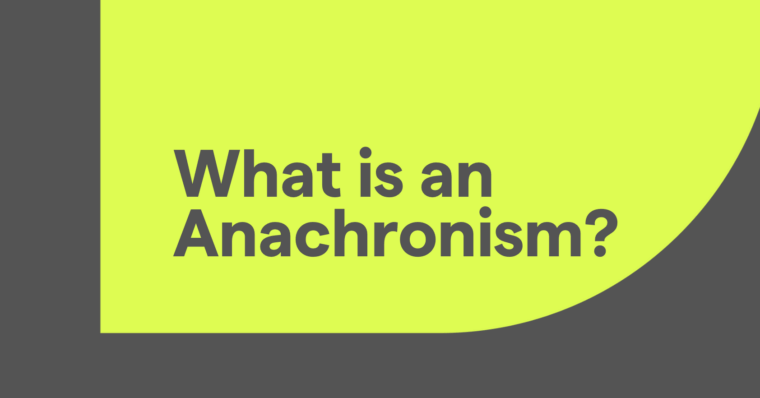
Sometimes, the most difficult part of writing an essay is getting started. You might have an outline already and know what you want to write, but struggle to find the right words to get it going. Don’t worry; you aren’t the first person to grapple with starting an essay, and you certainly won’t be the last.
Writing an essay isn’t the same as writing a book. Or writing a poem. Or writing a scientific research paper. Essay writing is a unique process that involves clear sequencing, backing up your positions with quality sources, and engaging language. But it’s also got one important thing in common with every other type of writing: You need to hook your reader’s attention within the first few sentences.
Intriguing ways to start an essay
There are many different ways to write an essay introduction. Each has its benefits and potential drawbacks, and each is best suited for certain kinds of essays. Although these essay introductions use different rhetorical devices and prime the reader in different ways, they all achieve the same goal: hooking the reader and enticing them to keep reading.
To “hook” a reader simply means to capture their attention and make them want to continue reading your work. An essay introduction that successfully hooks readers in one essay won’t necessarily hook readers in another essay, which is why it’s so important for you to understand why different types of essay openings are effective.
Take a look at these common ways to start an essay:
Share a shocking or amusing fact
One way to start your essay is with a shocking, unexpected, or amusing fact about the topic you’re covering. This grabs the reader’s attention and makes them want to read further, expecting explanation, context, and/or elaboration on the fact you presented.
Check out these essay introduction examples that use relevant, engaging facts to capture the reader’s attention:
“More than half of Iceland’s population believe that elves exist or that they possibly can exist. Although this might sound strange to foreigners, many of us have similar beliefs that would sound just as strange to those outside our cultures.”
“Undergraduate students involved in federal work-study programs earn an average of just $1,794 per year. That’s just slightly more than the average rent for a one-bedroom apartment in our city.”
Relevance is key here. Make sure the fact you choose directly relates to the topic you’re covering in your essay. Otherwise, it will feel random, confusing, or at best, shoehorned into the essay. In any case, it will undermine your essay as a whole by making it seem like you don’t have a full grasp on your topic.
If you’re writing an expository or persuasive essay, including a shocking or amusing fact in your introduction can be a great way to pique your reader’s curiosity. The fact you present can be one that supports the position you argue in the essay or it can be part of the body of data your expository essay explains.
Ask a question
By asking a question in your essay opening, you’re directly inviting the reader to interact with your work. They don’t get to be a passive consumer; they’re now part of the conversation. This can be a very engaging way to start an essay.
Take a look at these examples of essay openings that use questions to hook readers:
“How many times have you been late to class because you couldn’t find parking? You’re not alone—our campus is in desperate need of a new parking deck.”
“How frequently do you shop at fast fashion retailers? These retailers include H&M, Zara, Uniqlo and other brands that specialize in inexpensive clothing meant for short-term use.”
Asking a question is an effective choice for a persuasive essay because it asks the reader to insert themselves into the topic or even pick a side. While it can also work in other kinds of essays, it really shines in any essay that directly addresses the reader and puts them in a position to reflect on what you’re asking.
Dramatize a scene
Another effective way to write an essay introduction is to dramatize a scene related to your essay. Generally, this approach is best used with creative essays, like personal statements and literary essays. Here are a few examples of essay introductions that immerse readers in the action through dramatized scenes:
“The rain pounded against the roof, loudly drowning out any conversations we attempted to have. I’d promised them I’d play the latest song I wrote for guitar, but Mother Earth prevented any concert from happening that night.”
“Imagine you’ve just gotten off an airplane. You’re hot, you’re tired, you’re uncomfortable, and suddenly, you’re under arrest.”
Beyond creative essays, this kind of opening can work when you’re using emotional appeal to underscore your position in a persuasive essay. It’s also a great tool for a dramatic essay, and could be just the first of multiple dramatized scenes throughout the piece.
Kick it off with a quote
When you’re wondering how to write an essay introduction, remember that you can always borrow wisdom from other writers. This is a powerful way to kick off any kind of essay. Take a look at these examples:
“‘The past is never dead. It’s not even past.’ —William Faulkner. In his novel Requiem for a Nun, our changing perspective of the past is a primary theme.”
“‘It always seems impossible until it’s done.’ —Nelson Mandela. Before I joined the military, boot camp seemed impossible. But now, it’s done.”
Just as in choosing a fact or statistic to open your essay, any quote you choose needs to be relevant to your essay’s topic. If your reader has to perform a web search for your quote to figure out how it relates to the rest of your essay, it’s not relevant enough to use. Go with another quote that your text can easily explain.
State your thesis directly
The most straightforward kind of essay introduction is one where you simply state your thesis. Take a look at these examples:
“Fraternity culture is dangerous and contrary to campus values. Banning it is in the campus community’s best interest.”
“We can’t afford to ignore the evidence any longer; we need climate action now.”
By starting your essay like this, you’re cutting right to the chase. Think of it like diving into the deep end of a pool—instead of wading to that deep end, slowly getting acclimated to the water’s temperature along the way, you’re dropping your whole body right into the cold water. An introduction that directly states your thesis can be a great choice for an analytical essay.
How to write an essay introduction
Pick the right tone for your essay
You probably shouldn’t use a funny quote to start a persuasive essay on a serious subject. Similarly, a statistic that can evoke strong emotions in the reader might not be the right choice for an expository essay because it could potentially be construed as your attempt to argue for a certain viewpoint, rather than state facts.
Read your essay’s first paragraph aloud and listen to your writing’s tone. Does the opening line’s tone match the rest of the paragraph, or is there a noticeable tone shift from the first line or two to the rest? In many cases, you can hear whether your tone is appropriate for your essay. Beyond listening for the right tone, use Grammarly’s tone detector to ensure that your essay introduction—as well as the rest of your essay—maintains the right tone for the subject you’re covering.
When you’re stuck, work backwards
Starting an essay can be difficult. If you find yourself so caught up on how to write an essay introduction that you’re staring at a blank screen as the clock ticks closer to your deadline, skip the introduction and move onto your essay’s body paragraphs. Once you have some text on the page, it can be easier to go back and write an introduction that leads into that content.
You may even want to start from the very end of your essay. If you know where your essay is going, but not necessarily how it will get there, write your conclusion first. Then, write the paragraph that comes right before your conclusion. Next, write the paragraph before that, working your way backwards until you’re in your introduction paragraph. By then, writing an effective essay introduction should be easy because you already have the content you need to introduce.
Polish your essays until they shine
Got a draft of a great essay? Awesome! But don’t hit “submit” just yet—you’re only halfway to the finish line. Make sure you’re always submitting your best work by using Grammarly to catch misspelled words, grammar mistakes, and places where you can swap in different words to improve your writing’s clarity.






